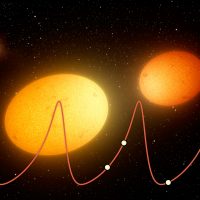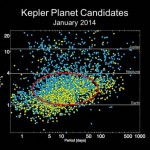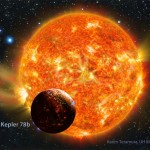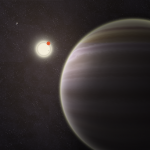
Heartbeat stars, discovered in large numbers by NASA’s Kepler space telescope, are binary stars (systems of two stars orbiting each other) that got their name because if you were to map out their brightness over time, the result would look like an electrocardiogram, a graph of the electrical activity of the heart. Scientists are interested in them because they are binary systems in elongated elliptical orbits. This makes them natural laboratories for studying the gravitational effects of stars on each other.
In a heartbeat star system, the distance between the two stars varies drastically as they orbit each other. Heartbeat stars can get as close as a few stellar radii to each other, and as far as 10 times that distance during the course of one orbit.



